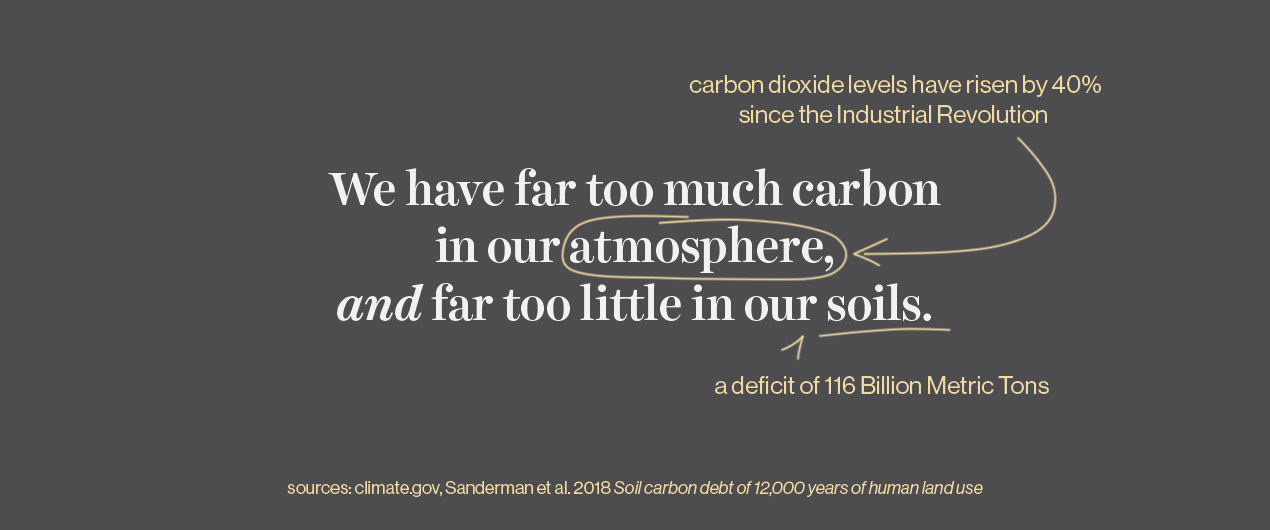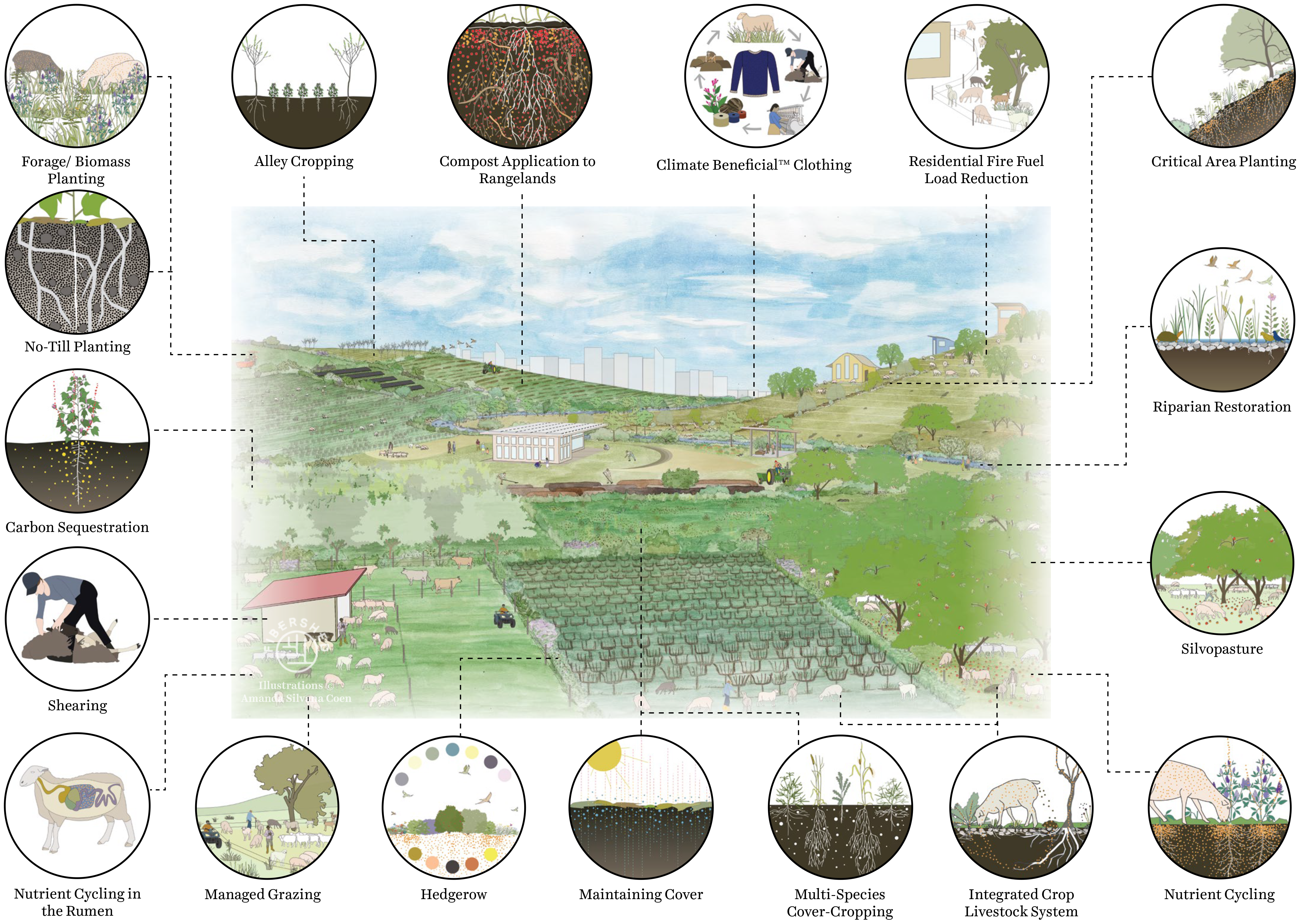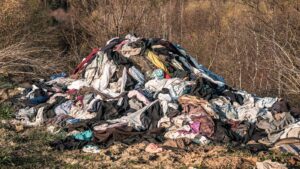Carbon Farming

Carbon Farming means choosing farming and ranching practices that are known to enhance the flow of carbon from the atmosphere and into plant and soil life. Carbon Farming has the potential to restore balance within the carbon cycle in a way that will ameliorate climate change, build resilience to drought and increase our agricultural productivity naturally.
To begin carbon farming, we ask: what are all the ways that land stewardship might move carbon from the atmosphere and into the soil?
Practices like applying compost to rangeland, establishing hedgerows, windbreaks, or silvopasture, planting multi-species cover crop, or prescribed grazing can be incorporated into fiber, fuel, dye, and food producing landscapes. Fibershed advocates for and envisions place-based adoption of carbon farming practices that restore ecosystem health bioregionally. Many of these practices are considered regenerative agriculture, and are rooted in Indigenous relationships with tending and cultivating land.

What is the science behind carbon sequestration in agriculture? Our approach and understanding is rooted in peer-reviewed scientific literature. This foundational research is recognized by global soil health programs like the 4 Per 1000 Initiative, state policies and coalition work like California’s Healthy Soils Program, and locally-based research programs including the Marin Carbon Project, the work of the Silver Lab at UC Berkeley, and the Gaudin Lab at UC Davis. Please check back for a summary of scientific context and literature.
Carbon Farm Planning provides a customized guide for producers to maximize the capacity of their land to be healthy, productive and resilient while achieving quantifiable benefits toward greenhouse gas sequestration and climate change mitigation. Fibershed works with partners including the Carbon Cycle Institute, Resource Conservation Districts, and independent Technical Service Providers to develop Carbon Farm Plans for participating producers in our Climate Beneficial Fiber Verification Program. Each plan is unique to the producer, their goals, and the landscape, and includes a timeline for adopting practices, along with estimated GHG impacts. With a Carbon Farm Plan, producers are empowered to make farming and ranching decisions with carbon as their organizing principle.
How do we know the climate benefit of carbon farming? Fibershed has partnered with the Carbon Cycle Institute and the Marin Carbon Project for over a decade to understand modeling and measuring the Greenhouse Gas (GHG) impact of agriculture and working lands.
The GHG estimates we track and produce through our Climate Beneficial Fiber Verification program are generated through COMET-Planner and COMET-Farm. These tools evaluate carbon sequestration and GHG reductions with dynamic ecosystem science, developed by Colorado State University and the USDA Natural Resources Conservation Service. Click here to listen to our podcast episode with Dr. Keith Paustian, a Soil and Crop scientist who led the development of the COMET systems.
Carbon is not the only benefit we see from these production practices: farmers and ranchers are ameliorating the climate crisis while providing habitat for migratory birds, restoring streams and watershed health, reducing the use of synthetic nitrogen fertilizers, growing more species of plants for a biodiverse ecosystem, and increasing the water-holding capacity of soil.
By restoring ecosystem health, carbon farming contributes to a more resilient future for people and planet.
Join Fibershed in expanding the many benefits and practices of carbon farming:
- Do you want to help drawdown atmospheric carbon to build healthier soil and ecosystems? Donate to the Carbon Farm Fund
- Are you a textile or garment maker or manufacturer? Source Climate Beneficial Fibers for your value chain
- Are you a landowner or land steward? Learn more about practices that you can integrate into your land stewardship
Photos by Paige Green


